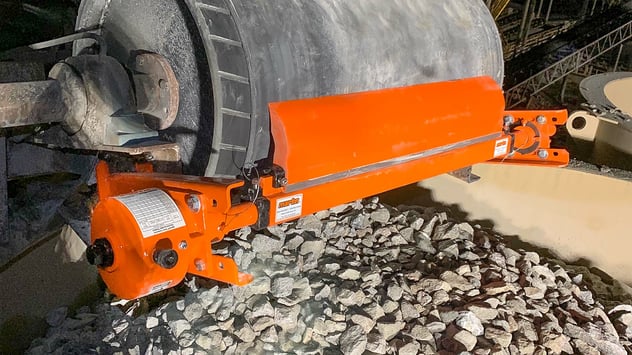By Jerad Heitzler on Nov 5, 2021 9:29:51 AM
In September, it seemed to me like things had started to get somewhat back to normal. The hallmark of this thought came to me while I attended an international mining show in Las Vegas. It wasn’t the first time I had traveled, been around people, or attended an industry show since COVID. But it was at the Las Vegas Convention Center and drew mining professionals from around the world. It was definitely the most interactive event I have been to since the pandemic.
One of the conversations I had motivated me to write this blog post on our upcoming Belt Cleaner Selection webinar (Tuesday, Nov. 9th / Thursday, Nov. 11th). I chatted with a miner who thanked me for all of the webinars we released over the past year. His crew viewed them often and found them useful. His only complaint: they needed/wanted more. In particular, he was looking for in-depth training on selecting the correct belt cleaner. He asked and we listened!
Properly Selecting A Belt Cleaner
When belt cleaners are not selected properly, they will not achieve the desired performance. This often leaves a poor opinion of the cleaner itself and/or the manufacturer. But, it really is a quite simple and true realization. Just like if you use a life jacket outside of its specified weight limit...will it be as effective? No! As I thought about this, I kept going back to 1 main principle:
- Critical aspects of selecting the correct cleaner (head pulley diameter, material path, belt speed, belt width, available space for installation, etc.) should never be disregarded. They are paramount in achieving a clean plant and having belt cleaners operate at maximum efficiency.
When selecting a belt cleaner, one of the most important specifications is matching the size of the cleaner to the size of the head pulley. The larger the pulley is, the larger the cleaner needs to be. This is relevant regardless of the manufacturer of the belt cleaner. A majority of manufacturers refer to the pulley diameter rather than the circumference when sizing their belt cleaners. Most provide easy ways to determine which belt cleaners are appropriate for the size of the pulley; they may have an online selector, charts that make it easy to size a belt cleaner, or even experts who come on-site to measure and make a recommendation. How it is done is not important, that it is done is what matters.
There are several other aspects a belt cleaner manufacturer takes into consideration once the size of the head pulley is known:
- The size of the blade
If blades are undersized, they will not last long. They will wear extremely fast and need constant replacement. Smaller blades will most likely be less expensive however when a buyer considers the increased replacement cost, the initial cost-savings will seem foolish. The larger the blade is, the more urethane it has and the longer it will be able to stay in service.
- The force tolerance of the mainframe that the blade sits upon
Undersizing a belt cleaner in relation to the head pulley can lead to huge problems. If the mainframe that the blade sits on is undersized, the force upon it can bend and rip out the mainframe. This would likely result in the mainframe (and accompanying blade) being lodged into a chute or damaging a downstream belt.

There are many factors to selecting a belt cleaner that is right for your operation. The most important factor is to be sure that it is sized correctly for the head pulley diameter. To learn about other selection criteria, join me for our November webinar.




comments